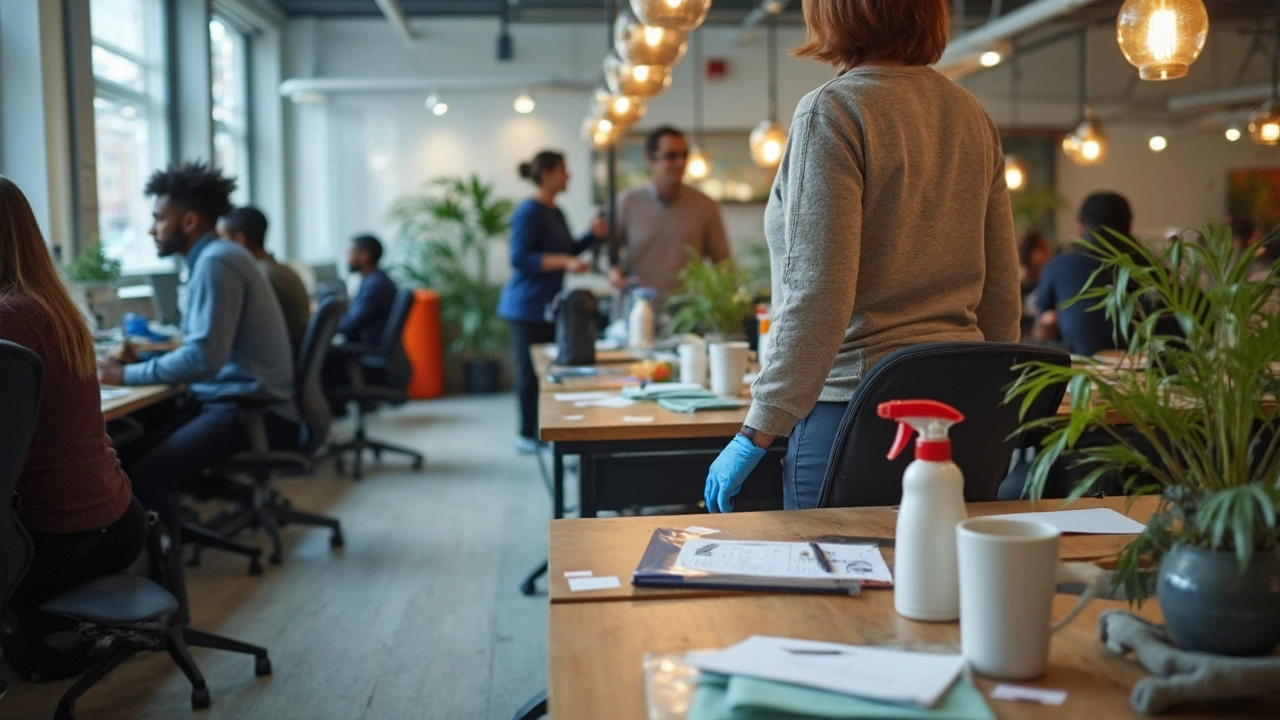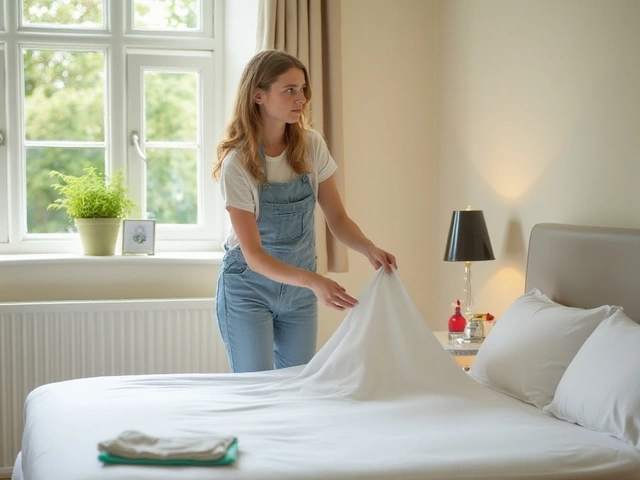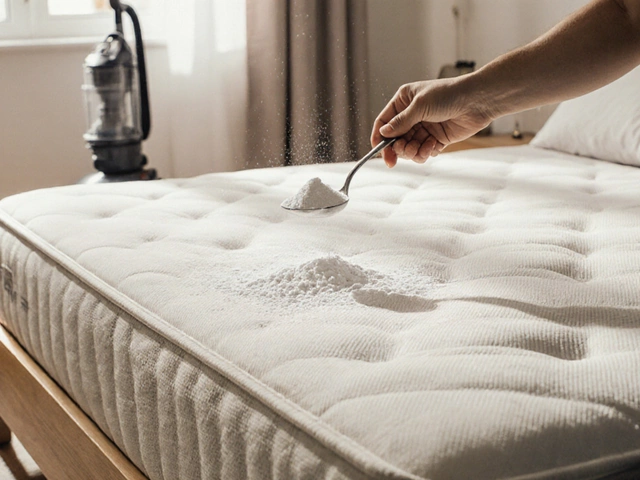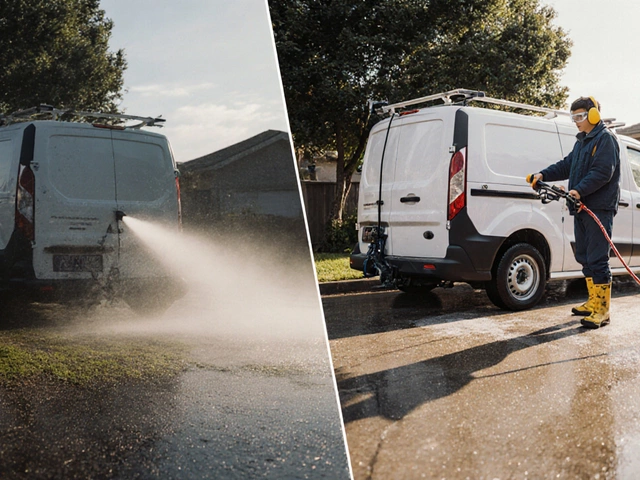Tired of sticky keyboards and overflowing trash cans? You’re not alone. Messy offices don’t just look bad—they actually mess with your health and productivity. Did you know that the average desk has 400 times more bacteria than a toilet seat? It’s not exactly something you want to brag about at the next team meeting.
At the very least, every office needs a schedule. Just mopping the floor once in a blue moon won’t cut it. Areas like restrooms, kitchenettes, and shared electronics become breeding grounds for germs when ignored. Make it a habit to clean high-touch surfaces and empty bins daily, while saving deep cleaning for carpets and windows for once a month.
Offices aren’t all the same, though. If you’ve got lots of visitors or a small space crammed with people, you’ll need to ramp up cleaning. Even the fancy new hand sanitizers on everyone’s desk can’t help if no one’s wiping down doorknobs or shared phones. Keeping up with germs isn’t about perfection—it’s about having a sensible and realistic routine, and actually sticking to it.
- Why Regular Cleaning Matters
- Daily, Weekly, and Monthly Tasks
- Germ Hotspots You’re Probably Missing
- Smart Strategies for a Cleaner Office
Why Regular Cleaning Matters
It’s crazy how quickly an office can go from spotless to kind of gross. Here’s something that might surprise you: the typical office desk can carry more germs than a kitchen countertop or even a bathroom door handle. That’s not just a gross-out fact—it’s a real hazard, especially during cold and flu season.
Office cleaning isn’t just about keeping things looking nice. Germs and allergens collect fast on keyboards, phones, shared desks, and even those break room tables. If your team skips regular cleaning, you’re basically rolling out the red carpet for sniffles, coughs, and even stomach bugs. The CDC has reported that workplace illnesses cost companies billions each year because of sick days and lost productivity.
There’s more to it, though. When customers, clients, or potential hires visit, the state of your office makes a big impression. Clean spaces show you care about health and attention to detail, even if all you did was toss the trash and wipe down door handles. It sends a message that you value everyone’s well-being—and yes, that matters for morale too.
- Office cleaning helps lower the risk of viruses spreading from person to person.
- It helps keep allergy triggers like dust and mold in check, which is a huge deal for people sensitive to those things.
- Regular cleaning keeps equipment running longer, too—dust and dirt can actually mess up computers and phones if you ignore them long enough.
Think of cleaning as a simple habit that pays off. A little sweat (or a good cleaning crew) now and then saves way more trouble—and doctor’s bills—down the line.
Daily, Weekly, and Monthly Tasks
A good cleaning routine isn’t just about grabbing wipes when you spill your coffee. It’s about knowing what needs attention right now, what can wait, and what falls somewhere in between. Here’s a real look at how often you should hit every corner of your office, backed up by what actually works for most workplaces.
Let’s break it down by how dirty things get and how many people use them. Office cleaning experts from the CDC say it straight:
“Frequently touched surfaces in the workplace, like doorknobs, keyboards, and phones, should be cleaned at least once a day to reduce the risk of spreading germs.”
Here’s a practical cleaning split:
- Daily tasks: Empty trash cans, wipe down desks and shared electronics, clean restrooms, and disinfect door handles. Sanitize kitchen counters and coffee machine buttons—these see more action than you think. Sweep main areas to keep dust and crumbs from piling up.
- Weekly tasks: Mop floors, dust shelves, clean inside microwaves and fridges, and wipe down windowsills. Give shared meeting rooms a little extra love. Replace hand towels and restock supplies.
- Monthly tasks: Vacuum vents and carpets, wash windows inside and out, scrub baseboards, and deep-clean office chairs. Check storage closets and get rid of old paperwork and random lunch leftovers hiding in the back of the fridge.
Wondering just how dirty the average office gets? Take a look at this data pulled from a 2024 commercial cleaning survey:
| Item | Average Germs Per Square Inch | Recommended Cleaning Frequency |
|---|---|---|
| Desk Surface | 21,000 | Daily |
| Keyboard | 3,295 | Daily |
| Office Phone | 25,127 | Daily |
| Restroom Faucet | 229 | Daily |
| Carpet | 4,500 | Monthly Deep Clean |
Want the office to smell fresh and keep people healthier? Stick to a schedule that actually gets followed. Assigning responsibilities or working with a pro cleaning crew can make all the difference. When in doubt, giving high-touch surfaces a quick daily clean is never a bad move for office cleaning.
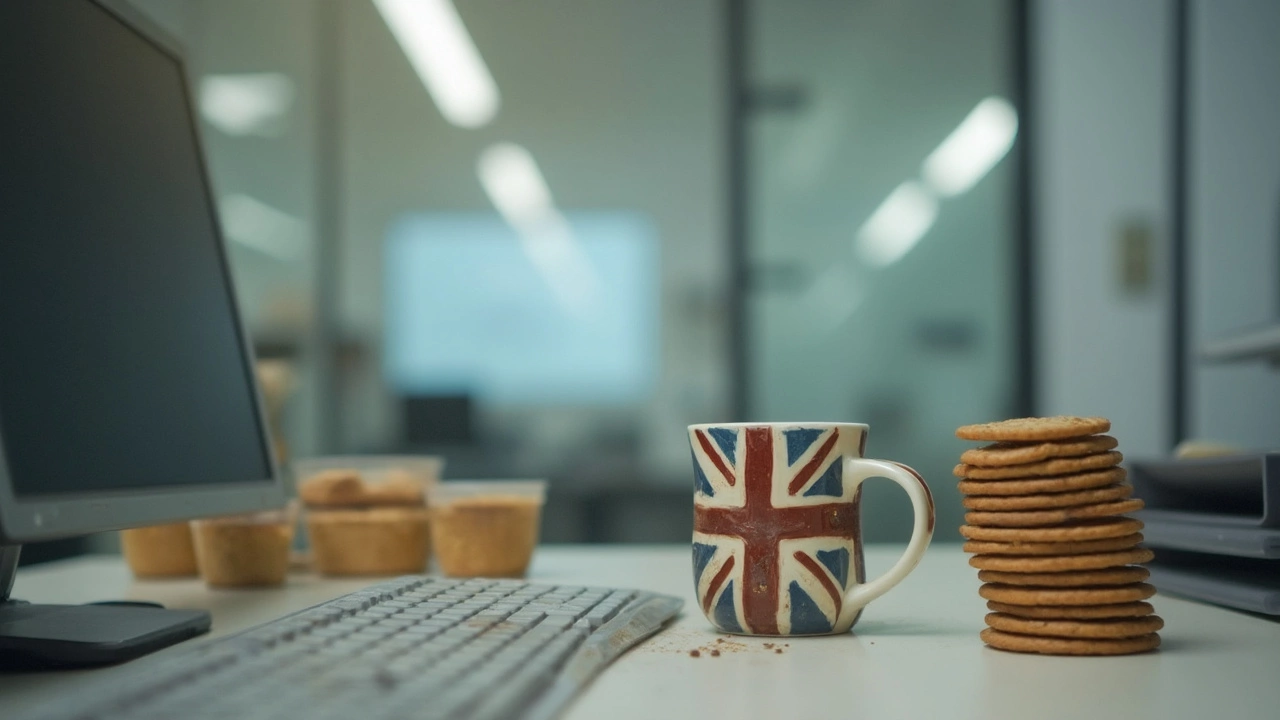
Germ Hotspots You’re Probably Missing
Some places in your office are just crawling with germs, but most people don’t even think about them. You wipe down desks and sweep the floors, sure. But what about the stuff everyone touches a hundred times a day? Germs move fast—and they love company.
The office cleaning routine has some classic blind spots. Take elevator buttons and door handles for example. According to a 2023 facilities study, elevator buttons can have over 40 times the bacteria found on a typical toilet seat. And those shared printers or copiers you use? Skin oils, food particles, and sweat build up fast, turning them into germ magnets.
- Keyboards and mice: Around 25,000 germs per square inch live here. Eating at your desk? It’s like sending an invite to every germ in the building.
- Phones—desk or shared: Both can house more bacteria than the office kitchen sink—those surfaces almost never get wiped down.
- Break room appliances: Think fridge handles, microwave keypads, and the coffee pot. These spots get heavy hands-on action and rare disinfection.
- Light switches and thermostats: Everyone touches them, no one thinks to clean them.
- Chairs—especially armrests: Cloth varieties trap sweat and food particles, and get skipped over in most quick cleans.
It helps to see just how dirty these places really are. Check out what researchers actually found in a typical medium-sized office:
| Hotspot | Average Germ Count (CFU/in²) |
|---|---|
| Desk Surface | 21,000 |
| Keyboard | 25,000 |
| Office Phone | 25,127 |
| Breakroom Faucet Handle | 2,483 |
| Microwave Door Handle | 1,898 |
| Toilet Seat | 49 |
Yes, you read that right: your desk and phone can be way dirtier than the toilet. Want a quick fix? Keep a pack of disinfectant wipes at each workstation and encourage everyone to wipe down shared gadgets and handles at least once a day. Not only does this make the place look better, it helps people stay healthy and avoid sick days.
Smart Strategies for a Cleaner Office
If you're running around trying to tidy up at the last minute, you're doing it wrong. Smart cleaning means thinking ahead and putting systems in place so that messes don't get out of control. One underrated move is setting clear cleaning responsibilities—don’t just hope someone else will scrub the microwave when it explodes. Use a simple calendar or checklist on the wall. You’d be surprised how much cleaner things stay when everyone knows what to do and when.
High-traffic areas like kitchens, restrooms, and entryways deserve special attention. Since door handles, microwaves, and shared coffee pots collect germs faster than you can say “sick day,” it makes sense to hit these every day. Here’s a data-backed reason: according to a 2024 workplace study, regular disinfection of common areas can reduce contagious absences by nearly 50% in offices.
- Put sanitizing wipes or sprays within easy reach in every meeting space and break room.
- Empty trash bins before they get packed—overflowing bins are a magnet for fruit flies and bad smells.
- Rotate deeper cleaning tasks, like vent dusting or carpet shampooing, at least once a month so grime doesn’t build up.
- Encourage employees to keep their desks clutter-free. Cluttered desks mean missed spots and more germs.
Keep everything stocked: paper towels, soap, and tissues. When supplies run out, people cut corners—and that’s how mess spreads. You don’t need to overspend, just track what’s needed and restock before you run dry.
Here’s a quick look at how often you should clean common zones, based on recent facility management research:
| Area | Recommended Cleaning Frequency |
|---|---|
| Restrooms | Daily (sometimes twice a day for busy offices) |
| Desks & keyboards | Weekly |
| Kitchens/break rooms | Daily |
| Floors/carpets | Weekly vacuuming, monthly deep clean |
| Common electronics | Daily disinfecting |
Finally, make office cleaning part of your culture, not just a chore. Maybe start a friendly contest: reward the tidiest department with coffee vouchers or a pizza lunch. When people take pride in clean spaces, the difference is obvious—even on a hectic Tuesday.
